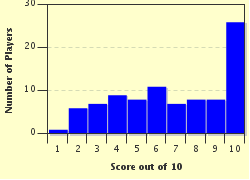Quiz Answer Key and Fun Facts
1. The ancient art of India can be evidenced in the magnificent murals in the caves of Maharashtra. Besides murals, there are magnificent stone sculptures of Hindu deities, The Buddha and Jain Thirthankaras. There are three such caves which have been declared UNESCO World Heritage Sites. Two are the Ajanta and the Elephanta. What is the third one?
2. The famous miniature painting style flourished under the rule of the Mughal ruler Akbar, but it declined under the rule of one Mughal emperor. Name this emperor.
3. In ancient India under the rule of the Kushanas, the Satvahanas and the Mauryas, two schools of sculpture developed. Both these schools were famous for sculptures of Buddha which they created in different styles. Can you name these two schools?
4. Born in the Travancore family of Kerala, he became one of the most famous artists of India. He developed his own style of painting, combining the realistic style of oil painting with the traditional Indian style of painting. He was famous for his paintings depicting scenes from the Mahabharata and Ramayana. Who was he?
5. Does the tribal Indian art form of Madhubani come from the north Indian state of Uttar Pradesh?
6. He was one of the founders of the Bengal School of Painting. He was also the nephew of the Nobel Laureate, Rabindranath Tagore. Who was he?
7. Born in Hungary, she became one of India's most celebrated artists. She is often called India's Frieda Kahlo. Who was she?
8. This form of painting comes from the South-Indian state of Tamil Nadu. It is famous for the use of high-quality gold foil along with semi-precious and precious stones. What is this form of painting?
9. Often known as the Picasso of India, he became one of the most successful artists in India. He unfortunately passed away in the month of June, 2011. He was also a writer and a film-maker. Who is he?
10. The Kalighat form of painting comes from Kolkata in the Indian state of Poschim Bengal (West Bengal).
Source: Author
rohan007
This quiz was reviewed by FunTrivia editor
looney_tunes before going online.
Any errors found in FunTrivia content are routinely corrected through our feedback system.

